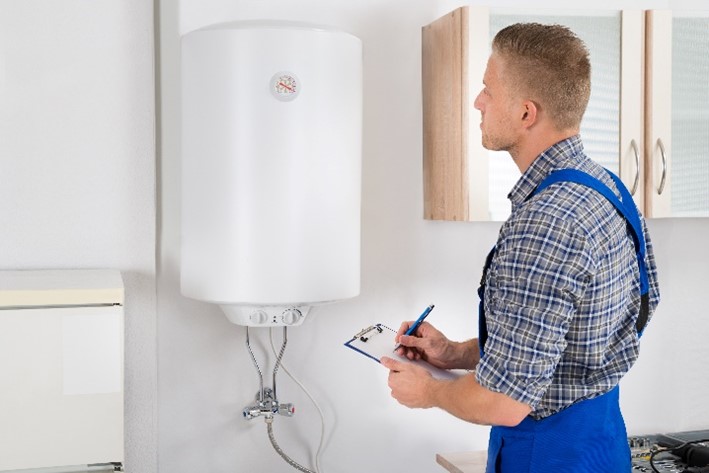Effective Techniques for Caring for Your Home's Hot Water SystemHow to Extend the Lifespan of Your Home's Hot Water System By Maintenance
Effective Techniques for Caring for Your Home's Hot Water SystemHow to Extend the Lifespan of Your Home's Hot Water System By Maintenance
Blog Article
We've unearthed this article on Water Heater Maintenance Tips You Can't Afford to Forget down the page on the web and felt it made sense to share it with you in this article.

Hot water is essential for day-to-day convenience, whether it's for a rejuvenating shower or cleaning recipes. To ensure your warm water system runs successfully and lasts longer, normal upkeep is essential. This short article gives functional pointers and insights on how to keep your home's hot water system to stay clear of interruptions and expensive fixings.
Introduction
Maintaining your home's warm water system may appear complicated, however with a couple of basic steps, you can guarantee it runs smoothly for several years to come. This overview covers every little thing from understanding your warm water system to DIY upkeep suggestions and knowing when to call in expert aid.
Significance of Preserving Your Warm Water System
Regular upkeep not just prolongs the life-span of your warm water system but also ensures it runs efficiently. Overlooking upkeep can lead to reduced performance, higher energy expenses, and also premature failure of the system.
Indications Your Hot Water System Demands Upkeep
Knowing when your hot water system needs interest can protect against significant issues. Look out for signs such as inconsistent water temperature level, weird noises from the heater, or rustic water.
Understanding Your Hot Water System
Prior to diving right into upkeep tasks, it's useful to comprehend the basic elements of your warm water system. Normally, this consists of the hot water heater itself, pipelines, anode poles, and temperature controls.
Monthly Maintenance Tasks
Routine regular monthly checks can help catch small problems before they intensify.
Flushing the Hot Water Heater
Purging your water heater removes sediment buildup, boosting performance and lengthening its life.
Monitoring and Replacing Anode Rods
Anode rods protect against rust inside the container. Checking and changing them when worn out is critical.
Evaluating and Changing Temperature Level Setups
Changing the temperature settings makes certain ideal performance and safety and security.
DIY Tips for Maintenance
You can perform several maintenance jobs yourself to keep your hot water system in top condition.
Checking for Leaks
Frequently examine pipes and connections for leakages, as these can lead to water damage and higher expenses.
Evaluating Pressure Relief Valves
Evaluating the pressure relief valve ensures it functions appropriately and protects against too much stress build-up.
Shielding Pipelines
Shielding warm water pipelines lowers warmth loss and can conserve power.
When to Call a Professional
While DIY maintenance is beneficial, some concerns call for expert competence.
Complicated Issues Calling For Expert Assistance
Examples consist of major leaks, electric problems, or if your hot water heater is constantly underperforming.
Regular Expert Maintenance Benefits
Professional upkeep can consist of comprehensive inspections, tune-ups, and guaranteeing compliance with safety and security requirements.
Conclusion
Normal maintenance of your home's warm water system is important for efficiency, durability, and cost savings. By adhering to these suggestions and recognizing when to seek professional assistance, you can make certain a reliable supply of hot water without unanticipated disruptions.
Water Heater Maintenance: The Basics
Maintaining your water heater will ensure it operates efficiently and has a longer lifespan. Neglecting regular maintenance can lead to costly repairs and an even bigger chunk of your savings if you have to replace it sooner than necessary. But there’s good news: Most water heater maintenance tasks are relatively simple and easy for homeowners with basic DIY skills.
Flush the Water Heater
Over time, sediment and minerals can build up in the tank, reducing its efficiency and potentially causing damage. To flush the tank, turn off the power or gas supply, attach a hose to the drain valve near the bottom and open the valve to drain the water until it runs clear. Ideally, flush the tank annually.
Replace the Anode Rod
The anode rod is a sacrificial metal rod that helps prevent corrosion inside the tank. Inspect and replace it every three to five years or per the manufacturer's recommendation. To replace the anode rod, turn off the power or gas supply, drain a few gallons of water from the tank, unscrew the old rod and replace it with a new one. If the anode rod is significantly corroded or covered in calcium buildup, it's a sign the water heater may need to be replaced soon.
Tune-Up
A yearly tune-up can help identify potential issues and ensure your water heater operates at peak efficiency. This typically involves checking the thermostat, burner assembly (for gas heaters) and any other components specified by the manufacturer. During a tune-up, the technician may also clean the burner and adjust the pilot light (for gas heaters) or examine the heating elements (for electric heaters).
How to Maintain Your Water Heater
Insulate the tank. Insulating the tank can improve energy efficiency and reduce heat loss, saving you money on energy bills. You can purchase precut insulation blankets designed specifically for water heaters or use standard fiberglass insulation wrapped securely around the tank. Check the temperature. The recommended water temperature for most households is around 120 degrees Fahrenheit (49 degrees Celsius). Higher temperatures can increase energy costs and potentially cause scalding. Use a kitchen thermometer to check the temperature at the faucet nearest the water heater. Monitor water pressure. Excessive water pressure can strain the water heater and cause leaks or even tank failure. Install a pressure-reducing valve if necessary. The ideal water pressure range is between 60 and 70 PSI (pounds per square inch). Test the temperature and pressure (T&P) relief valve. The T&P relief valve is a safety feature that releases pressure if the tank gets too hot or the pressure builds up too high. Test it annually by lifting the lever and allowing a small amount of water to release. Replace the valve if it doesn't release water or reseal properly. Check for leaks. Regularly inspect the tank, pipes and fittings for leaks or corrosion. Deal with issues promptly to prevent further damage. Even a small leak can lead to significant water damage over time. Consider a tankless water heater. If your traditional tank-style water heater is nearing the end of its lifespan ( typically 10 years), consider replacing it with a tankless water heater. These units heat water on demand, reducing standby energy losses and potentially saving you money on your energy bills. Schedule professional maintenance. While homeowners can perform many water heater maintenance tasks, it's still a good idea to schedule professional maintenance every few years. A plumber or HVAC technician can thoroughly inspect the unit, identify potential issues and ensure it operates safely and efficiently. https://www.homeserve.com/en-us/blog/home-improvement/hot-water-heater-maintanence/

I stumbled upon that blog posting about What Kind of Maintenance Do Water Heaters Need? when doing a lookup on the search engines. Appreciated our article? Please share it. Help someone else find it. I praise you for your time. Kindly come visit our website back soon.
Book A Free Estimate Report this page